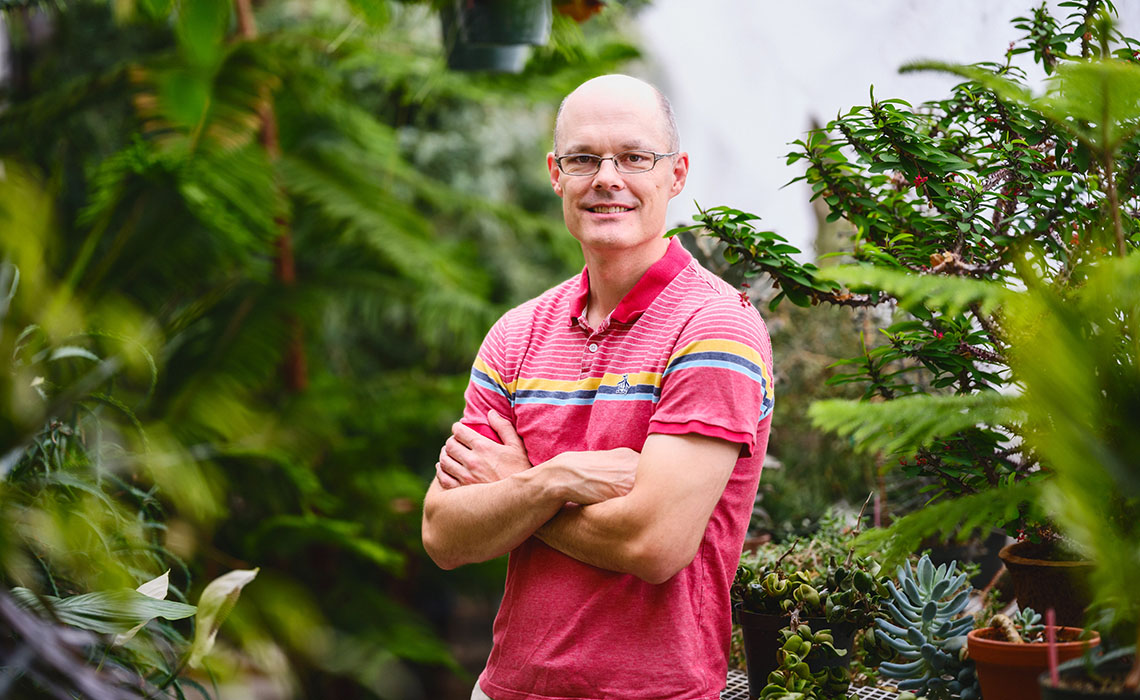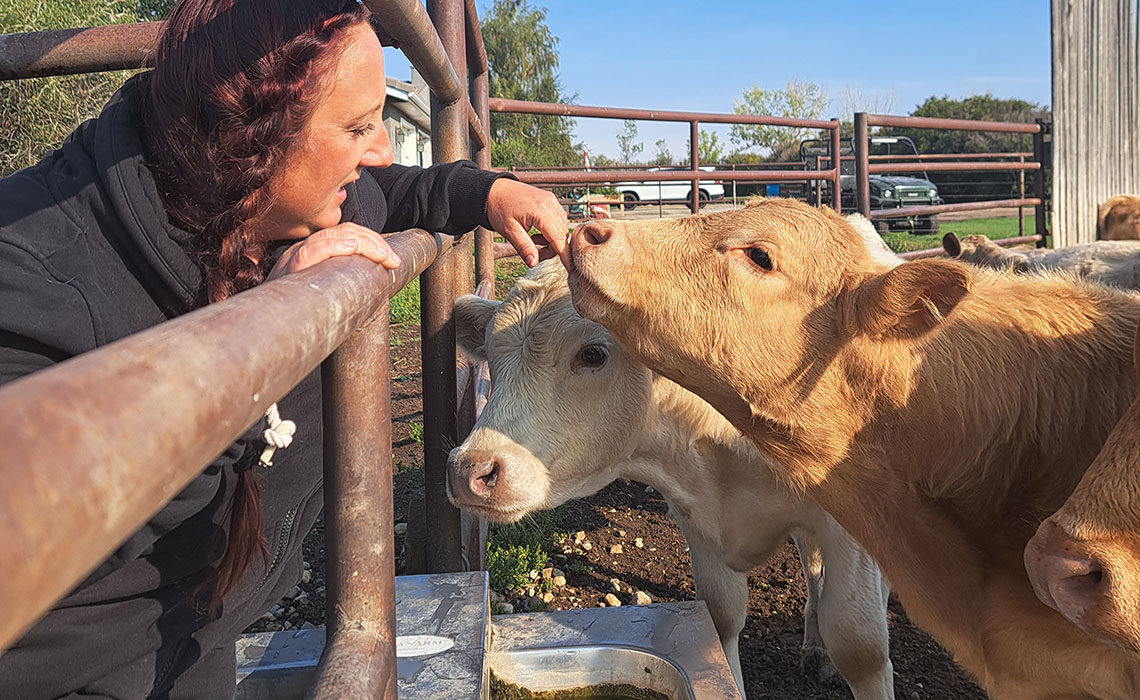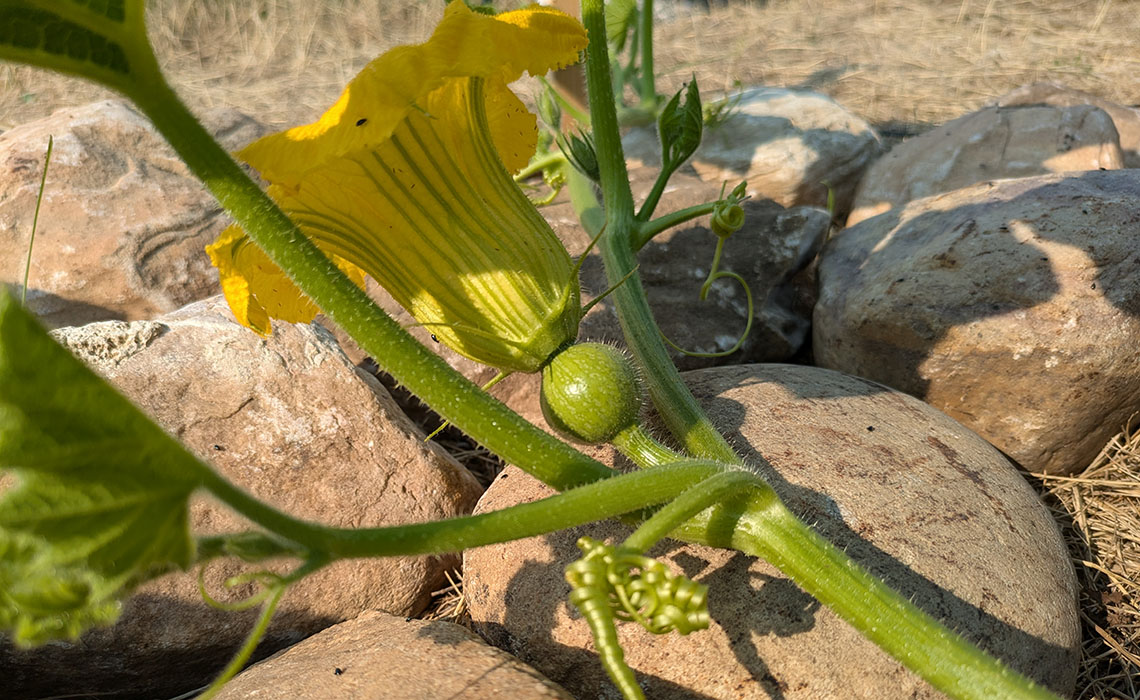Every drop matters

Dr. Mathew Swallow, PhD and MRU associate professor in the Department of Earth and Environmental Sciences, remembers his grandfather recounting the time night hijacked day.
“He was telling me about the dust bowl in the ’30s and how daytime turned into night in Saskatchewan,” Swallow says. “All of a sudden a storm would go through and it would be pretty much pitch-black out.”
The dust bowl era, which blew away 75 per cent of the topsoil in some areas, created severe economic upheaval and hardship over the Great Plains of North America, leaving many desperately trying to protect exposed soil from being stripped from the landscape. It is estimated that conventional farming practices have caused nearly half of the world’s most productive soil to disappear over the last 150 years, threatening crop yields and contributing to nutrient pollution, dead zones and erosion.
These days, many who work the land are just as reliant on Mother Nature, who can give as easily as she takes. Amid ongoing drought conditions in Alberta, there’s an urgent focus on keeping water in the soil. In Calgary, perhaps, more than ever.
A massive water main burst in June led to major water restrictions and illustrated that it is not simply an on-demand commodity that flows at the twist of a tap, but an important and precious resource.
“Really, its value becomes more apparent when you have water shortages,” Swallow says. “I’m happy people are becoming more water conscious about soil. It’s too bad it took a water main break for it to happen. It would be nice if people changed their practices to be a little more water smart.”
Collecting natural moisture proven highly effective
MRU alumna Tricia Fehr is already hyper-conscious of safeguarding the water supply on her family’s mixed-use farm near Crossfield against daily threats to their livelihood.
“This is the first drought I've been involved in while farming has been my main career,” the fifth-generation farmer says. “Dad talks a lot about what it was like in the ’80s. I remember going with him to pump water out to the cows.”
Taking a break on a recent rainy day (if feeding the cows and working on machinery is a break), Fehr explains how less moisture meant harvesting the wheat early this year, pulling in a slightly below-average crop.
And when a pasture creek on their land stopped flowing and began drying up, she hauled water to cows, careful not to put too much pressure on the aquifer she shares with her parents who farm nearby.
Every drop counts.
They collect rainwater in several 1,000-litre tanks off the barns and the house and Fehr has banned her husband from cutting the legumes growing around the bottom of the trees so they can grow tall in the fall to trap snow over the winter.
“The more snow we can get the better,” she says. “It starts everything off right in the spring.”
With no irrigation in her area for crops, water is a constant worry. To alleviate some of the stress, many farmers like Fehr have become very creative.

On Fehr’s farm, they don’t till the soil other than when they seed it. After straw comes out of the combine, it’s chopped up and sprayed out as a blanket, which then slowly disintegrates to add nutrients and provide a protective armour for the soil.
“We’ve mulched every tree on our property so we don't have to water and they’ll live through this lack of moisture,” she says.
“Last year, I’m sure neighbours thought I was crazy. In the hay field I put up huge snow fences to trap more snow because the year before it was really dry,” she says. “I think you just adapt, that's part of being a farmer, go with the flow. It’s all out of your control. You wouldn’t last very long as a farmer if not.”
They are just as diligent on the homefront.
Water taken from their aquifer is pumped over to their house, then to septic tanks as grey water and sewage. Solids go to one side while liquids go to a second tank, which is eventually pumped out into grassy areas.
“We think about it all the time,” Fehr says.
Swallow does, too, from a slightly different perspective.
For the MRU in-house soil expert, it all comes down to protecting soil, which stores water by acting as a sponge. Tiny air spaces between the soil granules allow it to hold moisture.

He has several small sites on farmers’ fields where he has placed rocks to create protection and stop moisture from evaporating. Farmers on Easter Island rely on this lithic mulching approach to help regulate temperatures and release mineral nutrients as the stones weather. Swallow is comparing the effectiveness of stone mulch to straw mulch and bare soil, researching whether it can be an effective water-conservation tool in Canada.
Less academic albeit real-life research this summer saw many Calgarians bewildered that some plants did not suffer without their usual daily watering during the water restrictions. Many lawns refused to yellow and hardy petunias persisted.
Swallow isn't surprised.
“The rule of thumb is that gardens require about an inch of water a week. If you are watering every day, you are probably watering more than what the plant needs,” he says. “When we have lots of water, we usually don’t think it’s a big deal. When, in fact, water conservation is always a big deal.”
He suggests boosting water available to plants by adding organic matter like compost, which holds two to three times its weight in water.
Underscoring it all is the need to protect the topsoil. In Alberta’s grassland system, topsoil replenishes itself to the equivalent of the thinness of a sheet of paper per year. In the U.S. alone, soil on cropland is eroding 10 times faster than it can be replenished.
“And that can disappear in one rain or wind storm,” Swallow says. “You want to keep the moisture in the ground. You have to protect it.”
The Department of Earth and Environmental Science has three majors: Environmental Science, Geology and General Science.
